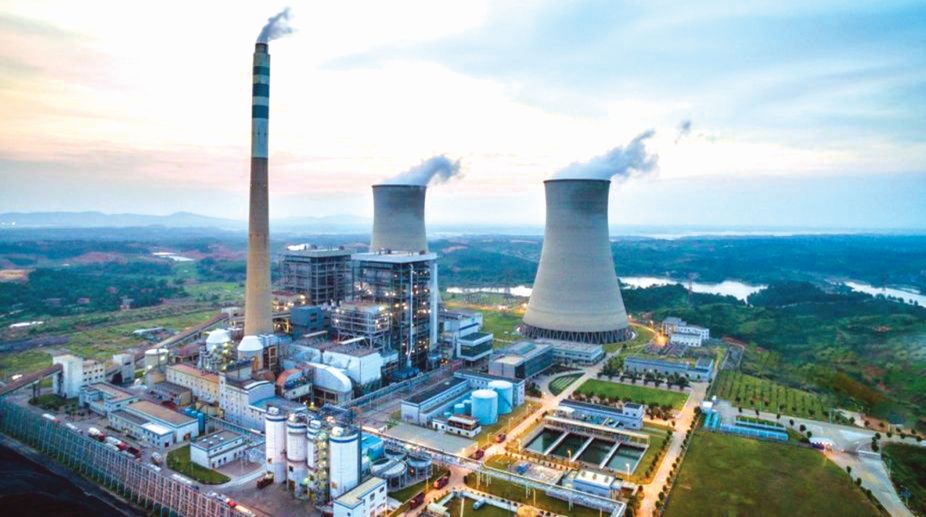General Vinod Saighal’s eminently readable, lucid opinion piece (The Statesman April 2) reflects the concerns of vast sections of the public. He argues persuasively against setting up nuclear power plants because he feels that these plants will form a very expensive nuclear legacy trap for future generations because of decommissioning and nuclear waste disposal issues.
His article highlights the seemingly unbridgeable communication gap between public and the nuclear community. Mired in controversy, the myths about decommissioning and nuclear waste management survive; the realities may remain unknown if nuclear community does not come out of their comfort zones and convey information to all sections of the public. Trust deficit of decision makers at higher levels of Government is not a welcome sign.
A book (The Trap) by Sir James Goldsmith reinforced Saighal’s apprehensions. The 1990 vintage book does not contain information on the latest advances on decommissioning of nuclear power plants and management of nuclear wastes.
Indian scientists have adequate experience in decommissioning of research reactors, reprocessing plants and nuclear facilities.
According to an authentic review (World Nuclear Association-WNA-,March 2018), “over 115 commercial power reactors, 48 experimental or prototype reactors, over 250 research reactors and several fuel cycle facilities have been retired from operation. Some of these have been fully dismantled”.
“Most parts of a nuclear power plant do not become radioactive, or are contaminated at only very low levels. Most of the metal can be recycled. Proven techniques and equipment are available to dismantle nuclear facilities safely and these have now been well demonstrated in several parts of the world.,” the WNA report added.
Scientists have developed technology to incorporate high-level nuclear wastes into glass (vitrification) to make them non-dispersible. Glass is least soluble even in hot, salt water. The vitrified waste after suitable capsulation (for instance in copper canisters) can remain safely in deep underground repositories for thousands of years. By 2025, Sweden and France will move high-level waste (HLW) to their permanent underground sites. Finland will move its HLW in 2020.
Other countries can follow these steps or even outsource waste management to France, Finland or Sweden, the real masters of the technology.
India has been operating vitrification plants for many years. The October 2013 issue of Sadhana, a journal published by the Indian Academy of Sciences vividly describes India’s nuclear waste management programme.
General Saighal rightly talks about the huge funding requirements. The Nuclear Power Corporation of India Ltd (NPCIL) collects two paisa per unit of electricity produced towards decommissioning funds. In 2016-17, NPCIL collected Rs 753 million. Evidently, vast sums will be available for decommissioning the reactors one by one after 40-50 years of operation.
Decommissioning nuclear power plants and nuclear waste management are no more insurmountable; we have the technology and the funds. The current generation need not feel guilty about any “Nuclear Legacy Trap” as feared by General Saighal.
Many NGOs and others published grossly exaggerated reports on Chernobyl and Fukushima In 2005, The Chernobyl forum made up of eight specialized agencies such as the WHO, the International Atomic Energy Agency(IAEA), ILO etc of the UN published Chernobyl’s Legacy: Health, Environmental and Socio-Economic Impacts” a landmark report. It is available online and offers the factual position.
Specialists found that “childhood thyroid cancer caused by radioactive iodine fallout is one of the main health impact of the accident. By 2002, more than 4000 thyroid cancer cases had been diagnosed in this group, and it is most likely that a large fraction of these thyroid cancers is attributable to radioiodine.”
Apart from this, “there is no clearly demonstrated increase in the incidence of solid cancers or leukaemia due to radiation in the most affected populations. There was, however, an increase in psychological problems among the affected population” the report added.
After a comprehensive assessment, “experts on the health risks associated with the Fukushima Daiichi nuclear power plant (NPP) disaster in Japan has concluded that, for the general population inside and outside of Japan, the predicted risks are low and no observable increases in cancer rates above baseline rates are anticipated.” ( WHO Press Release,28 February 2013)
“The estimated risk for specific cancers in certain subsets of the population in Fukushima Prefecture has increased and, as such, it calls for long term continued monitoring and health screening for those people”, the experts cautioned. NGOs spread conspiracy theories (such as WHO is under the thumb of IAEA, the promoter of nuclear energy!). It enhances the trust deficit between public and the UN agencies. Radiation specialists know the truth.
Regrettably, General Saighal copied five paragraphs (373 out of 955 words in his article) from Robert Hunziker, who regularly writes in COUNTERPUNCH (claims to do fearless muckracking!) and Professor Bernard Lowen, one of the founders of the International Physicians for the Prevention of Nuclear War (IPPNW) without any attribution. Hunziker’s article is Saighal’s major resource. (Note: General Saighal did attribute the words in question to Hunziker; the attribution was accidentally omitted during editing. – Ed.S.)
The paragraphs quoted by Saighal deal mainly with Chernoyl and Fukushima. Robert Hunziker extensively quotes from Professor Adam Broinoski, another prolific writer whose claims on the plight of “liquidators” at Chernobyl are unfounded. Chernobyl accident was devastating; the site is slowly recovering.
Fukushima site continues to be a challenge. Realizing that this need not be a disincentive against nuclear power, the Japanese started seven nuclear power reactors. They know that Fukushima was preventable. Survival of Onagawa nuclear power plant which faced the same earthquake and 14.3-metre tsunami as against 13.1 meters at Fukushima, because of “safety culture” gives them confidence.
If General Saighal and others for whom anti nuclear sentiment seems to be an article of faith read about Onagawa (The Bulletin of Atomic Scientists,10 March 2014) and appreciate the technological developments in decommissioning of nuclear power plants and waste management, they may change their views or may at least look at nuclear power more benignly.
The writer is a former Secretary, Atomic Energy Regulatory Board.












